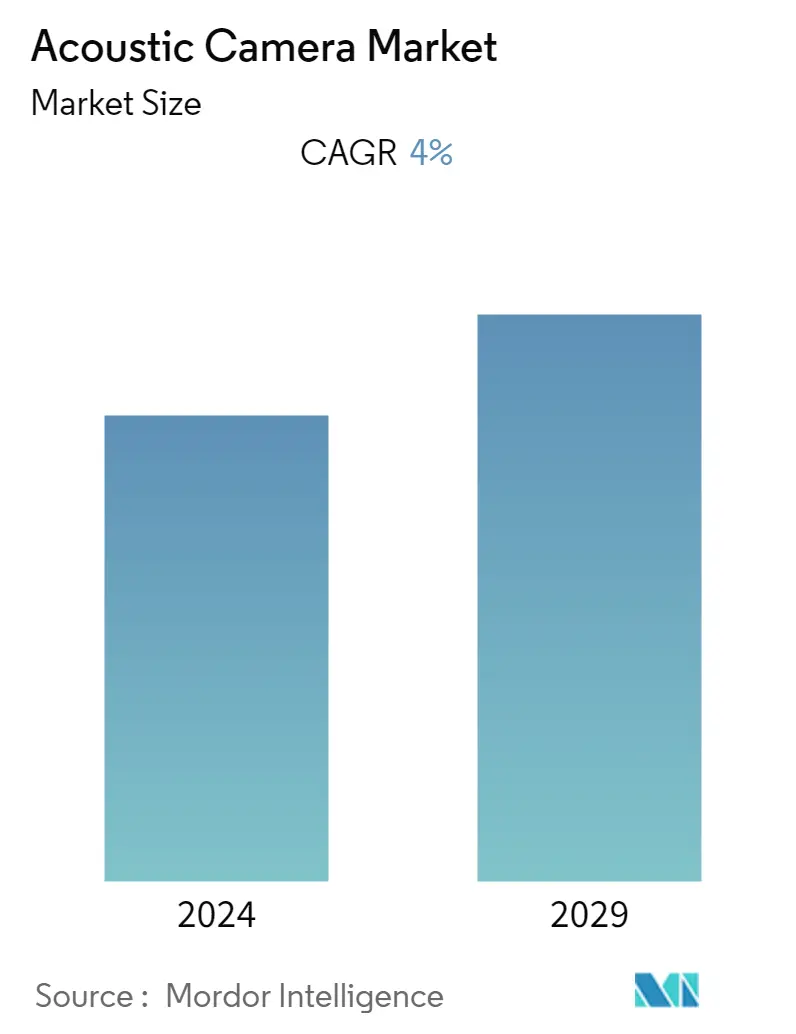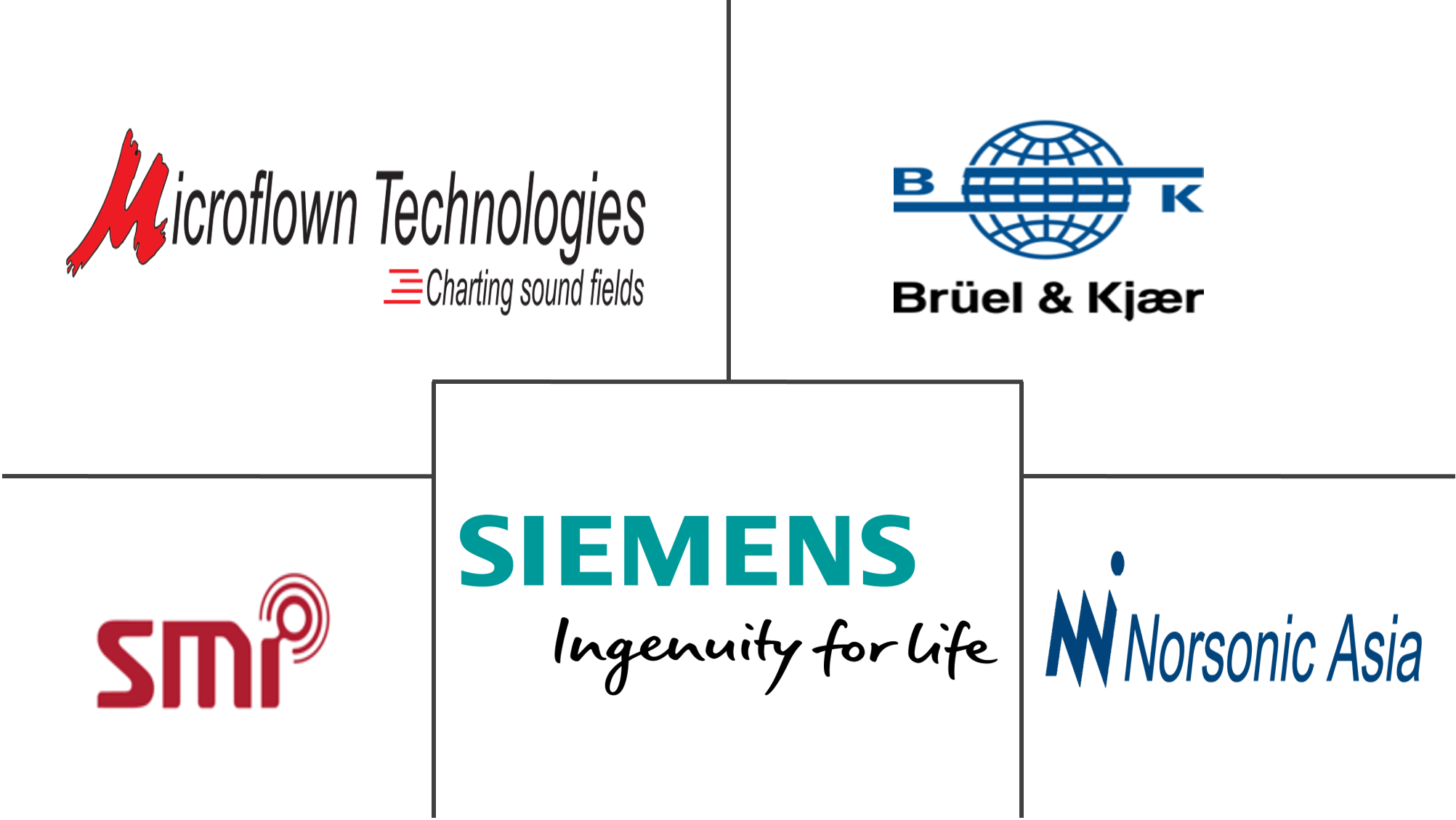Market Size of Acoustic Camera Industry

| Study Period | 2019 - 2029 |
| Base Year For Estimation | 2023 |
| CAGR | 4.00 % |
| Fastest Growing Market | Asia Pacific |
| Largest Market | North America |
| Market Concentration | Low |
Major Players
*Disclaimer: Major Players sorted in no particular order |
Need a report that reflects how COVID-19 has impacted this market and its growth?
Acoustic Camera Market Analysis
The Acoustic Camera Market is expected to register a CAGR of 4% over the forecast period (2022 - 2027). Some key drivers responsible for the market's growth include the growing adoption of room and building acoustics and emerging audio and video combined microphone and camera array technology.
- An acoustic camera is an innovative way of locating, visualizing, quantizing, and identifying sound sources. It uses the capabilities of a microphone array with a camera to "paint" a picture of the sound and the various sound intensities. The rise in demand for process automation, adoption of artificial intelligence and machine learning, and stringent regulation against noise pollution are primarily responsible for the growth of the acoustic camera market.
- There are many applications of the acoustic camera, with most focusing on noise reduction. The camera is frequently applied to improve the noise emission of vehicles like cars, airplanes, trains, and other structures like wind turbines. In the industrial sector, compressed air leaks, vacuum system leaks, and electrical partial discharge are all expensive system issues that consume power, causing companies to deal with unforeseen costs and potential production/uptime issues. Ultrasound imaging with an acoustic camera effectively detects these equipment issues as part of a complete asset management plan. This easy-to-use technology typically allows professionals to complete their inspections faster than traditional methods.
- The current trend moves toward adopting computing power and analytics provided by the acoustic imaging camera and any companion software by significant players. For instance, a camera, such as the FLIR Si124, offers on-camera analytics, easy-to-understand reporting, and predictive analysis using an AI/web tool. An inspector can classify leak severity, perform leak cost analysis, and do partial discharge pattern analysis in rreal timeduring a survey. Once the survey is complete, the inspector must automatically connect to their Wi-Fi network to upload images to the acoustic camera viewer.
- Recently, acoustic analysis attracted more attention and is being applied in many fields, such as speech recognition. However, due to background noise, condition-monitoring methods based on acoustic analysis are still tricky in an industrial environment. For many years, diagnostics in the industry were performed "by ear," with subsequent assessment of the emitted sound. Still, the influence of background noise can strongly affect the quality of such a judgment.
- To meet the various demands of the customer, the acoustics camera firms are expanding their product portfolio by introducing new products. For instance, in December 2021, The new acoustic camera SONASCREEN was added to the product line of SONOTEC, the Halle, Germany-based ultrasonic experts. The camera uses audible and ultrasonic frequency ranges to produce acoustic images. The tool makes it simple for maintenance crews to find leaks in compressed air and vacuum systems. By introducing the new industrial imager, SONOTEC offers an additional tool for energy auditing and predictive maintenance, ensuring operational dependability and efficiency. It is provided at a competitive price to make the SONASCREEN accessible to many clients and their applications.
- In acoustic cameras, many microphones are included to enhance the detection range and the number of data signals required for processing. This significantly increases the requirement for processing power, increasing the cost of the final product. Furthermore, the gap between the acoustic image pixel rises with an increase in distance. The availability of limited pixels availability is limited, which often makes it difficult to determine the exact location of the sound source.
- The COVID-19 pandemic affected the operations of microphone market players and the businesses of companies related to microphones, including acoustic cameras. However, the healthcare sector gained the market's growth. For instance, during the pandemic, a cough-detection camera contributed to the prevention and early detection of epidemics in public places.

